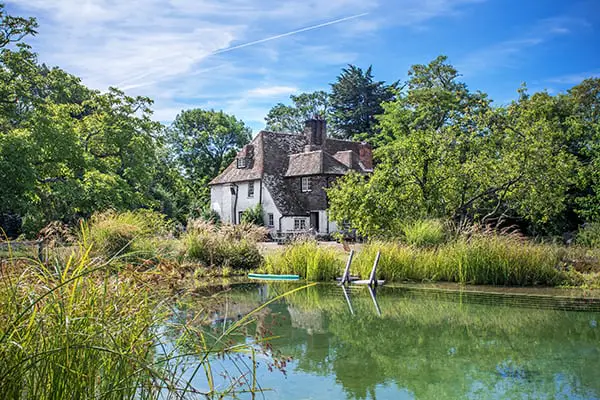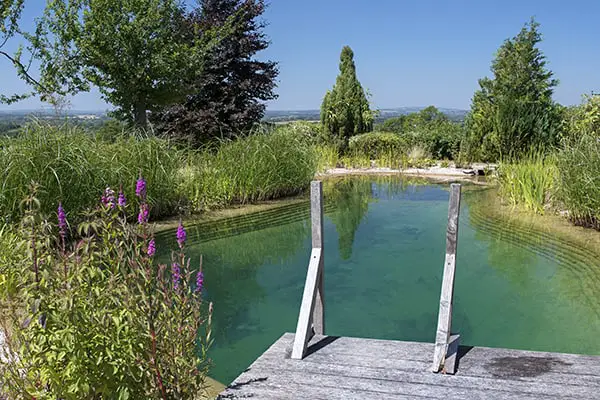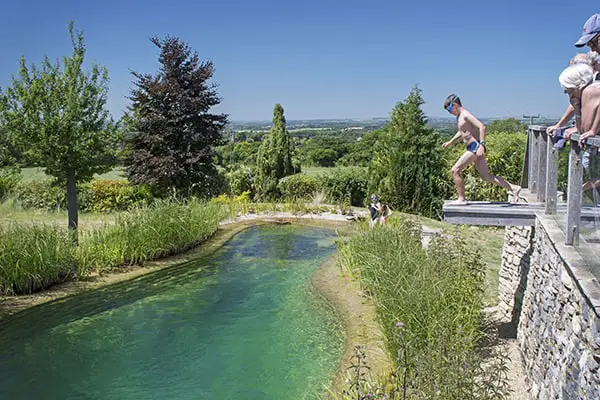
A swimming pool is a perfect avenue for a fun family bonding. Others used a swimming pool for health improvement. An exercise or a body relaxation, you can do it right in the comfort of your pool backyard. A way to enjoy one of nature’s greatest gifts, the water. Speaking of nature, it is abuzz with the homeowners in constructing a natural pool for a full environmental ambiance.
Natural pools are commonly be seen in the European country, but its popularity is now beyond other regions with sunny climates. A pool industry trend of a green natural pool is now a choice versus a conventional type of pool. A combination of a swimming hole associated with your beautifully designed landscape creating a recreation area for your home.
If a traditional swimming pool doesn’t fit in your envisioned pool style, you may create your refreshing, wildlife-friendly and aesthetically pleasing natural swimming pool. Here is everything you need to know before installing a natural swimming pool.
Why Go Natural?
A natural swimming pool is a bit different than the regular swimming pool you usually used. Natural swimming pools are a self-cleaning pool constructed with a wetland ecosystem. This kind of pool is not built to look the same, it is often designed to imitate pools, ponds and other bodies of water in the wild using realistic rocks and boulders. Natural pools are filtered organically using gravel filter or aquatic plants resembles the process as natural ponds are cleaned. Basically, to reduce the nutrients in the water through microorganisms of the plant to prevent algae formation and keep the water clear.
Natural pools are very adaptable in design. You can make it look like a traditional pool or an image of a brown natural pond by installing the right materials that will make the pool complete its natural appearance. You can create a mud-like bottom using filled concrete with an underground or hidden gravel filter. In terms of design and aesthetic, you can turn this pool into a simple natural pool or a realistic forest pond.
As it uses an organic filter like aquatic plants and gravel, natural pool lessens or totally not using any pool chemicals make it environmentally friendly. Chemicals may affect the existence of plants in the pool. Natural pools work fine in all ranges of climates just like ponds in the wild.
This kind of swimming pool requires less maintenance after construction than a conventional pool. The natural pool doesn’t need much chemical filtration, pH balancing and other daily or weekly chemicals needed for pool cleaning. They just need to stay away with debris and well-skimmed with regular checking done to your pool.
How is a Natural Swimming Pool Built?
The natural pool has two areas, the swimming area, and the regeneration zone. The swimming area is dug out that is surrounded by a block or stone wall. It is the deeper part of the pool for swimming with back-filled with concrete and compacted soil. The regeneration area is a shallow shelf where the oxygenating plant’s life can thrive and the place of filtration and cleaning of pool water. It is much smaller in height but also surrounded by blocks or stone walls. The regeneration area typically contains about 4 to 5 inches of pea or gravel on top of the liner foundation. A strong liner is needed to cover and serves as a seal of the pool bottom and sides to prevent water from seeping into the ground. The two areas are separated by a barrier preventing soil and roots from spilling over into the swim area. The regeneration area should be equal to the size of the area for swimming.
The shape of the natural pool is based on your personal preference. The most common shapes are the natural kidney-shaped, round or the formal straight edges. The visual aesthetic will be based on your chosen design and choosing plants that serve as natural filters. The perimeter is usually edged with wood or rocks to complete the natural look. You can also plant up to the edges because the roots may help to prevent erosion and adds the environmental feeling at the swim area.
For the circulation of filtered water, a small pump can be installed to move the water through the aggregates at the bottom of the regeneration zone and back to the swimming area to prevent stagnant water.
How Natural Swimming Pools Work?
The natural swimming pool uses the same process as a natural body of water to filter out harmful microorganisms with the help of the aquatic plants in the area. The regeneration part of the pool features the wetland ecosystem where plants and microorganisms serve as a filter and take care of undesirable elements like nutrients, bacteria, and pathogens. The shallow parts of the pool compete with the nutrients that the algae needed to grow. These processes eliminate the algae for complete water filtration. The water passes through the filtration and back to the swimming area, using a small pump, clarified and completely clean.
The natural pool didn’t use pool chemicals or other mechanical means. By purely organic methods of filtration, pool owners will understand that the pool water is safe. With the process of running water, owners do not have to worry about breeding mosquitoes or other insects to the swimming pool. Maintenance of this kind of pool is an easy task. No need for the regular pouring of pool chemicals and just regular inspection is required.

The Environment of a Natural Swimming Pool
Building the wetland ecosystem or the regeneration zone is the critical component of a natural swimming pool. Choosing the appropriate species will depend on the location and the climate. Plants should include shallow and deep marginal, bog plants, floating plants, and submerged oxygenators. A popular natural pool plant is water lilies along with Potamogeton and duckweed. Reliable submerged plants are Hornwort and elodea as they have a high oxygen output. A good choice of underwater and surface plants can give life to your regeneration zone.
A traditional pool involves a mechanical circulation system to prevent the natural pool water stagnant. A pump helps circulate the water and also gives the plants needed oxygen and moves the water to the plants for the filtration process.
The Cons of Natural Swimming Pools
We already know that a natural pool has a lower maintenance cost. The flip side of this low-cost maintenance is the higher initial investment. Remember that building a natural swimming pool requires an entirely discrete pool right by it for filtration, making it more expensive than the traditional swimming pool. Over the long run, the natural pool becomes cheaper than the traditional pool due to its lower maintenance cost. For high-quality work, you must hire a contractor specializes in this kind of pool construction to achieve your desired design and durability.
A natural pool requires an equal space for its two parts. The regeneration zone should generally be as big as the pool itself, which means space is a big factor in building a natural swimming pool. So prepare a large area for your target natural pool.
These organic pools are gaining popularity as a next home investment. After knowing the beneficial factors of having a natural swimming pool, it is enough why more and more homeowners are willing to build a natural pool rather than the conventional style of a swimming pool. Having a natural swimming pool can be a big investment at first but a long-time experience of nature at your own backyard. Giving an environmental touch on your home adds a relaxing space for more family fun and memories.
Related Questions
How Much is a Natural Swimming Pool Cost? Natural pools vary in terms of size, design, depth, and shape, it differs in cost as well. Regularly the prices range from 50 to 100 dollars per square foot installed of a natural swimming pool. An example is a pool measuring approximately 30 feet by 20 feet, a homeowner’s spending is about 70,000 dollars.
Is a Natural Swimming Pool Safe? The aesthetic of a natural swimming pool can’t be appealing to some swimmers who are used to perfectly chemically filtered, blue, clear water. With its color, the natural pool water is perfectly safe to swim in as it goes to a natural way of filtration with the help of aquatic plants and microorganisms.
Can I Retrofit My Chemical Pool into a Natural Swimming Pool? Yes, you can retrofit your existing pool into a natural swimming pool. You must keep in mind that the structure area of the current swimming pool must be large enough to accommodate the necessary regeneration zone of the pool. The swimming area must be equal to the regeneration zone, so if you want enough space for your swimming area, you must consider first the measurement you are willing to convert into a natural pool. In fact, you may build your own natural swimming pool or retrofit your existing pool. You can check our article about 10 Tips DIY Natural Swimming Pool for some techniques in building your own natural swimming pool.


